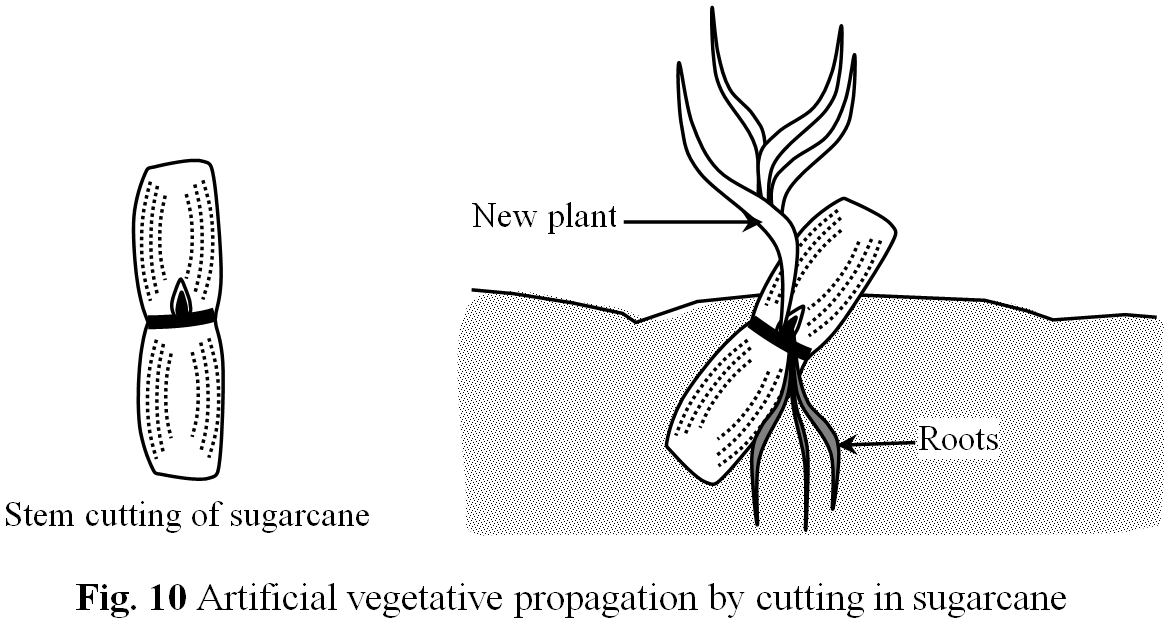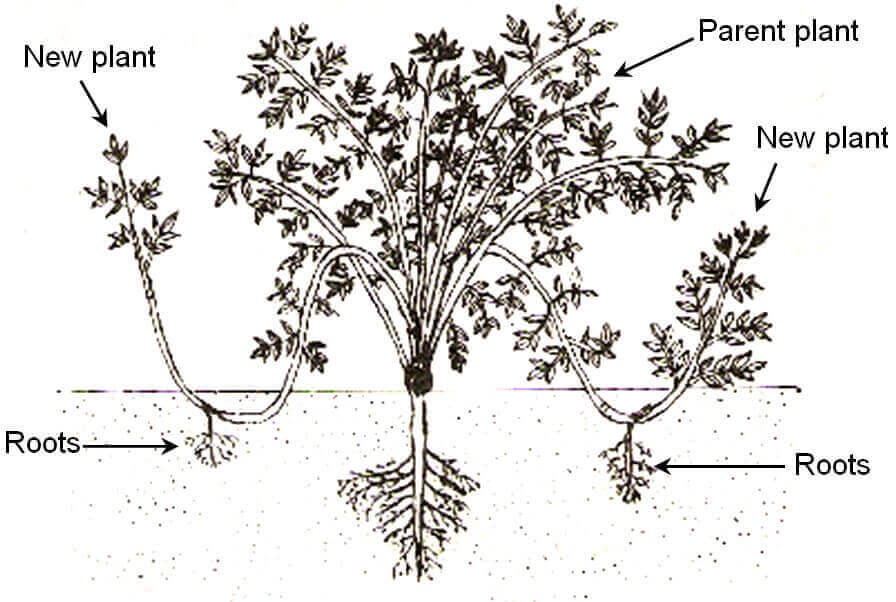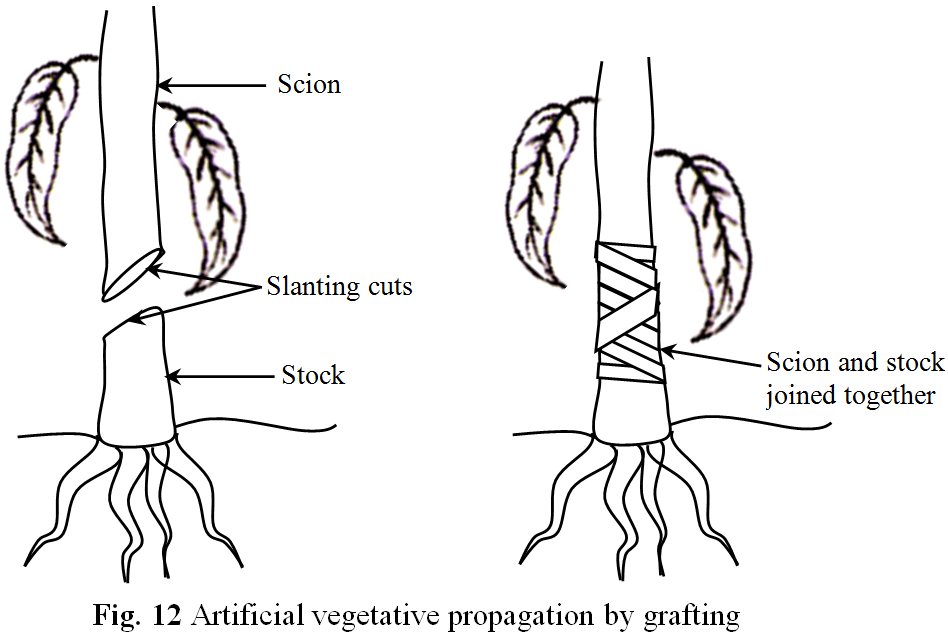Artificial vegetative propagation is the deliberate production of new plants from parts of old plants by humans. This can be done by following three methods:
1. Cutting
2. Layering
3. Grafting
Cutting
The part of the plant which is removed by cutting it from the parent plant is called a ‘cutting’. In this method one year old stem of root is cut from a distance of 20 to 30 cm. and is buried in the moist soil in natural position. After sometime, roots develop from this cutting and it grows into a new plant. This method is commonly used in rose and sugar cane.
Layering
This method of vegetative propagation is used in those plants whose soft branches occur near the ground such as jasmine plant. In this method, a branch of the plant which is near to the ground is pulled towards the ground and a part of this branch is covered with moist soil leaving the tip of this branch above the ground.
After sometime, roots develop from that part of the branch which was buried in the soil. This branch is then cut of along with the roots from the parent plant and develops into a new plant. This method of asexual reproduction is also used in the production of plants such as Bougainvillea, jasmine, guava, strawberries, lemon, China rose etc.

Grafting
In this method of vegetative propagation the stems of two different plants are joined together so as to produce a new plant containing the characters of both plants. Out of the two plants one plant has a strong root system while the other has a better flower or fruit yield. The plant of which the root system is taken is called ‘stock’, while the other plant of which the shoot is selected is known as ‘scion’ or ‘graft’.. These two stems i.e. the stock and the scion are fitted together by making slanting cuts in them and bound tightly with a piece of cloth and is covered with a polythene sheet.

While joining the scion with the stock care should be taken that the diameter of the stock and scion chosen for grafting should be equal. Scion gets the mineral and water from the soil through the stock and develops branches and produce fruits.
This method of propagation is used in mango, apple, rose, banana, pear, grape, pineapple and peach.
Test Your Understanding and Answer These Questions:
- What is grafting?
- How will you show that vegetative propagation takes place in potatoes and ginger?
- Explain the method by which the sugarcane and rose are grown.
- Give the names the different methods of artificial vegetative reproduction.
- Name the plants which are grown by grafting method.
- Name the plants which are grown by layering method.
- Name the plants which are grown by cutting method
